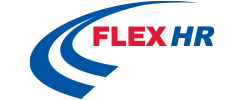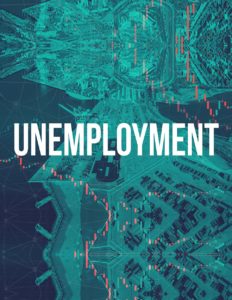Over 30M File for Unemployment as the Coronavirus Hammers Businesses in the US
 The COVID-19 pandemic is taking a devastating toll on the US economy, and the unemployment rate is continuing to expedite. More specifically, non-essential small to mid-sized business employers are being forced to furlough and layoff their employees due to reduced working, as well as productivity efforts, and forced closed doors.
The COVID-19 pandemic is taking a devastating toll on the US economy, and the unemployment rate is continuing to expedite. More specifically, non-essential small to mid-sized business employers are being forced to furlough and layoff their employees due to reduced working, as well as productivity efforts, and forced closed doors.
Under the CARES Act comes a new Employee Retention Tax Credit (ERTC) that will help some businesses, while the Paycheck Protection Program is available to aid small businesses only (less than 500 employees). “I compare it to a natural disaster, a terrorist attack and a financial shock all at once,” said Gregory Daco, chief U.S. economist at Oxford Economics. “We’ve never had this in history.” In fact, the unemployment rate today is the highest since the Great Depression, at over 18%*. Not only is there a steep rise in layoffs but a severe decline in the job market as companies have had to freeze or cancel their hiring growth plans.
Employers are struggling as to which employees they essentially have to let go from their company, primarily for financial reasons; however, retaining their best staff members is now being incentivized. The ERTC designed a program so that employers may be able to keep their workforce on their payroll during this challenging time of uncertainty. The U.S. Chamber of Commerce has created a useful guide to the new Employee Retention Tax Credit to walk employers through how the ERTC works.
There are various funding support resources available, but businesses will need to strategically manage all the requirements to achieve the best results. One example is the PPP Loan. Companies must spend 75% of the money in employee salaries in order to get the loan forgiven. Therefore, it’s important to strategize and determine the calculations of your authorized expenses to ensure you can receive forgiveness for every dollar you can. For those companies that Furloughed employees, it may be time to bring them back to work full time to meet the 75%. So, before you receive your PPP funds in your bank account make sure you are ready to execute the plan you have developed.
Luckily the Coronavirus Aid, Relief, and Economic Security (CARES) Act is providing extended unemployment benefits to those employees that have lost their jobs or been furloughed due to the COVID-19 recession. Additionally, if your employer laid you off, you may be eligible for COBRA health benefits. According to the Department Of Labor (DOL), each state sets its own unemployment insurance benefits eligibility guidelines, but you usually qualify if you:
- Are unemployed through no fault of your own. In most states, this means you have to have separated from your last job due to a lack of available work.
- Meet work and wage requirements. You must meet your state’s requirements for wages earned or time worked during an established period of time referred to as a “base period.” (In most states, this is usually the first four out of the last five completed calendar quarters before the time that your claim is filed.)
- Meet any additional state requirements. Find details of your own state’s program.
Stimulus Checks
Taxpayers are starting to see their stimulus checks being deposited or mailed to them. The Internal Revenue Service’s (IRS) “Get My Payment” tool guides citizens through a process where they can submit their social security number and personal bank account information. Most people should receive their payment within the next 2 weeks.
What do you get?
- Employees that earn up to $75,000 in adjusted gross income and have a Social Security number are set to receive a $1,200 payment under the law.
- Married couples who file joint returns will receive $2,400 if their adjusted gross income is under $150,000.
- Parents will receive $500 for each qualifying child ages 16 and under.
As the US creeps toward the peak of the Coronavirus crisis, businesses across America are continuing to adapt and modify their productivity as the economy endures more of a collapse. Although this is such a stressful time, small to mid-sized business owners can take a deep breath knowing there are finally some monetary alternative means as we just discussed.
Jim Cichanski, the CEO of Flex HR states “owners of small companies are struggling with the decisions they need to make to stay afloat such as Furloughs, Partial Furloughs, Lay-offs, and paying employees per the requirements of the Family First Act. And now there are specific calculations and employee actions you need to consider for the PPP loan in order to get the full impact on forgiveness. Hundreds of companies are using Flex HR consultants to guide them in making the proper decisions to be compliant and maximize the government funding.” Government interventions are starting to slowly lift shelter-in-place precautions (varying from state to state). Organizations must focus on operation plans to thrive subsequently. It’s critical for businesses to evaluate their Human Resources and act now to reshape vital functions, rewrite updated policies and procedures and then communicate these changes with employees ahead of operating in a new reality.
*Rate as of April 22, 2020.
Written by Jim Cichanski, CEO, Flex HR, Inc.
Flex HR specialists serve thousands of different organizations, in countless industries, with company sizes varying from a few to over 75,000 employees. They offer many levels of services including HR consulting, outsourcing (HRO), compliance, recruiting & talent acquisition, training & development, and onboarding administration.
Flex HR serves almost every industry in all 50 states, including Georgia, Florida, California, North Carolina, and Tennessee, as well as Puerto Rico, the Virgin Islands, Canada and Europe supporting U.S. subsidiaries of foreign owned companies.
Our Flex HR specialists serve thousands of different organizations, in countless industries, varying from a few to over 75,000 employees.
To Learn More about Flex HR Contact Us.
* Statistics and government guidance are rapidly changing. This is the most updated information as of the morning of 4/24/20. Small business is defined as under 500 employees.

